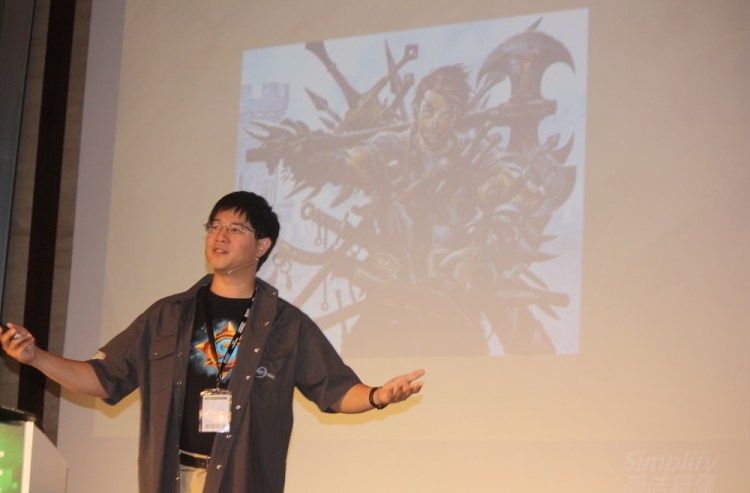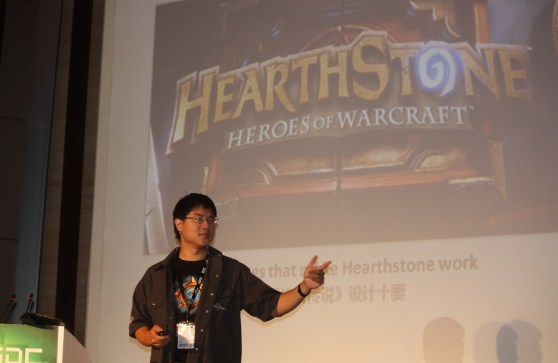6. Immediate fun
Complex games often require tutorials, but players skip them and then suffer a royal beatdown a new game. After that, the chances are they will never come back. Chu said the team opted to get players into the action first. Then the game gives them more things to learn about as they progress. Some fans didn’t like that because they discovered new powers like Secrets later in the game than they expected.
7. Embrace the medium
Hearthstone is a digital card game, not paper, so it should do things that paper-based that you can’t do. In one example, Chu noted that when one Minion character dies, a card can revive it and put two Minion replacement cards in your hand. In a paper-based game, that would be obvious to an opponent. But not so for a digital game.
8. Don’t change too much
Players know how to play card games, so you don’t have to change things they are familiar with, like coming up with a different name for “attack” or “health.” This helps reduce the “mental friction” it takes to play a game, Chu said.
9. Support player stories
Chu said he always remembered the first time he went on a raid in World of Warcraft. It turned out badly, but he got enough help from other players to make the experience fun and memorable. He tells the story of what happened on that raid with relish, and he wanted such tales to come from Hearthstone, too. So Chu’s team created cards that directly supported player stories.
10. Emotional design matters
Hearthstone is designed so that the player feels like they are inside a warm pub, playing a game. But there isn’t much more done to convey the story via cinematics or movie-like videos. Chu said that shows that you need to supply enough story and emotion in a card game, but not too much so that it becomes unwieldy and less fun.
To balance the emotion in games, you have to pay attention to whether a player is experiencing just negative or positive feelings in a match. If it’s too one-sided, the player may become bored or frustrated.
11. Little victories
Games like World of Warcraft provide a stream of fun. In a 1-on-1 card game, someone wins, and someone loses. With Hearthstone, the designers gave you lots of little victories and little setbacks. So sometimes you feel like you were winning or losing. This constant back-and-forth keeps the player engaged and feeling a range of emotions throughout the game. That becomes more memorable.
VentureBeat's mission is to be a digital town square for technical decision-makers to gain knowledge about transformative enterprise technology and transact. Learn More




